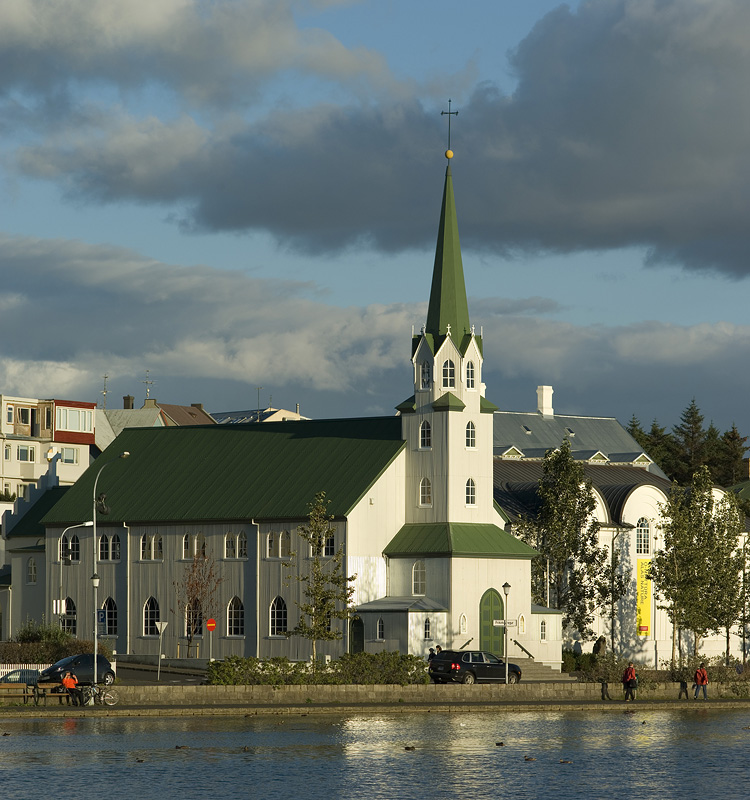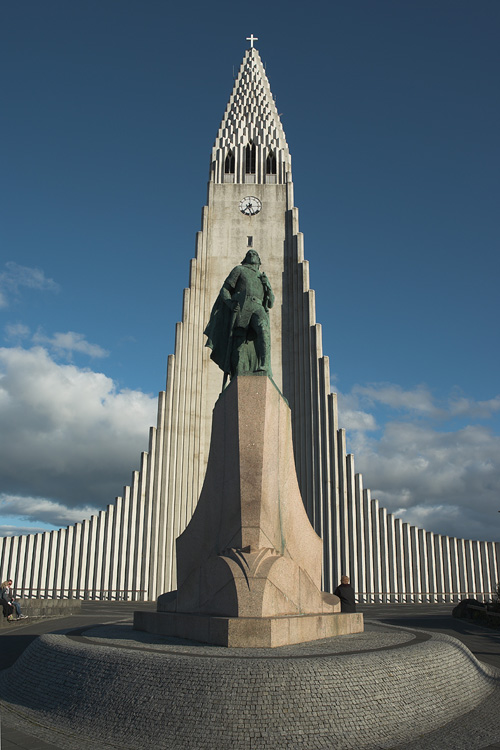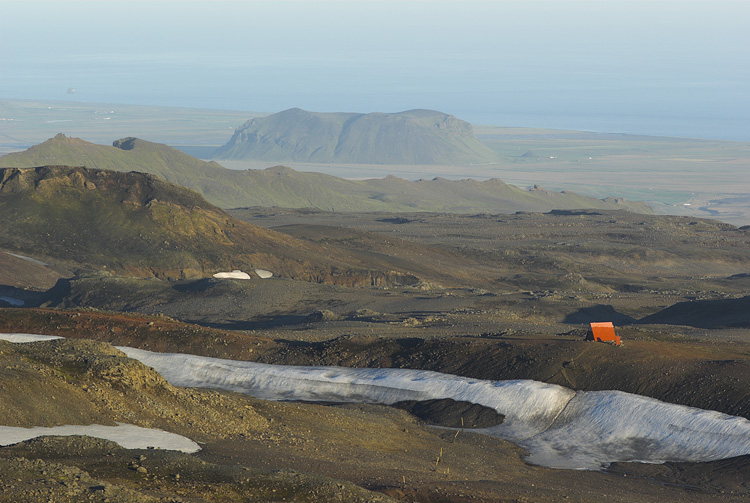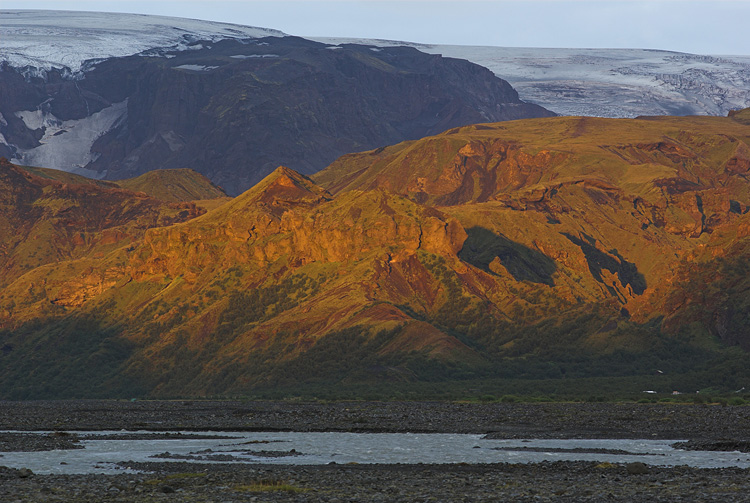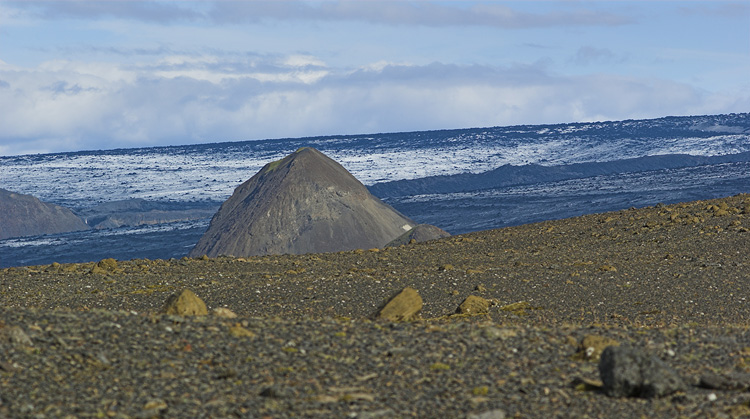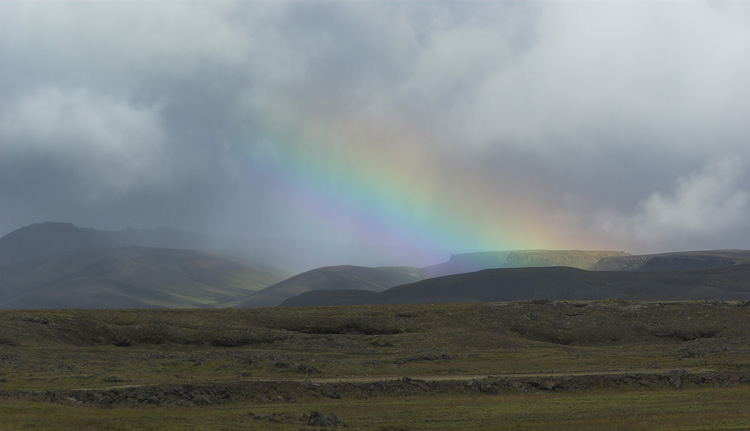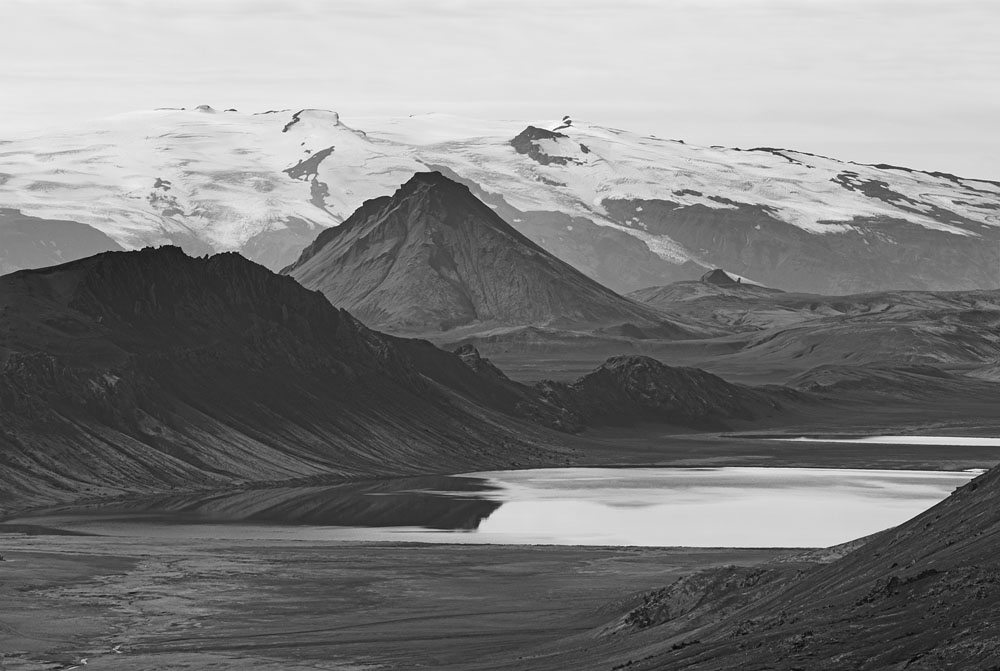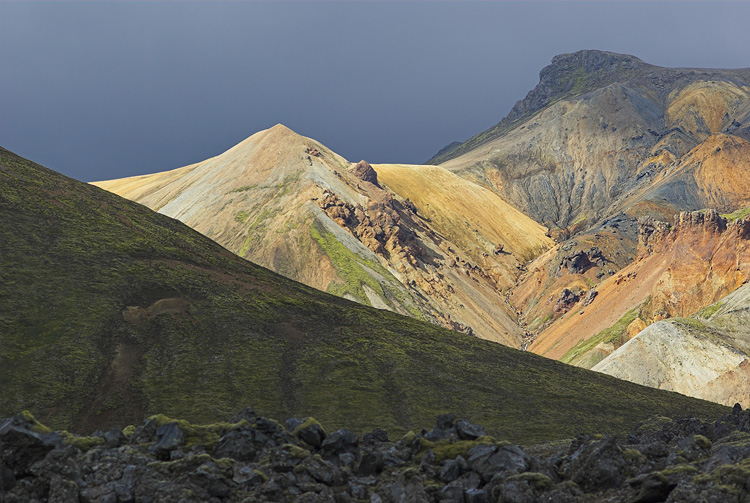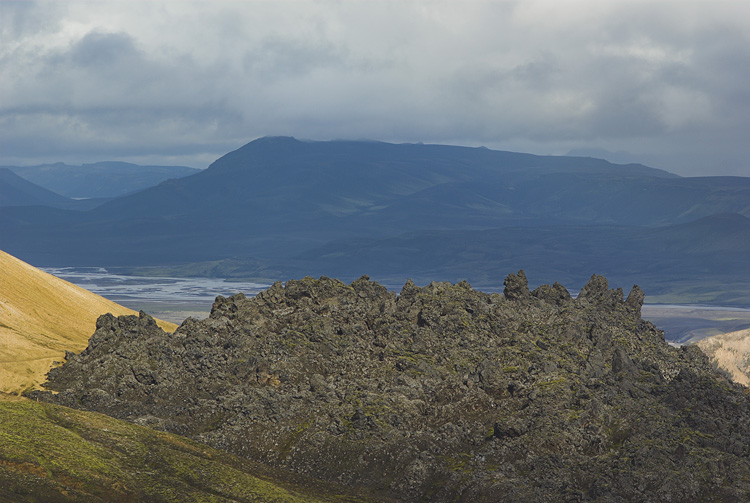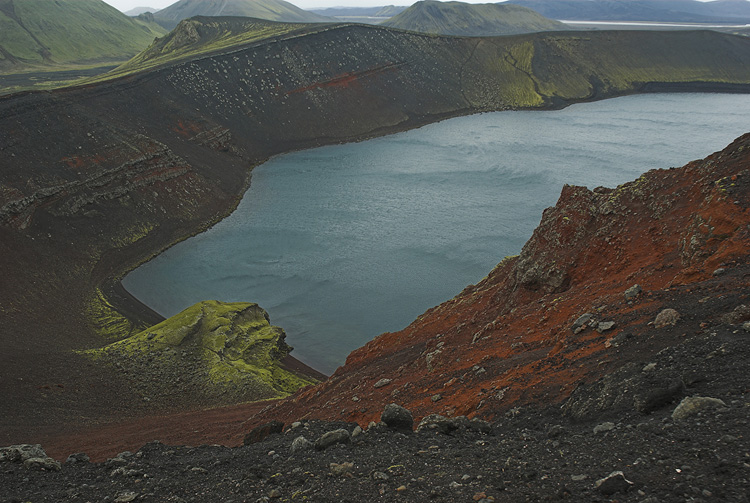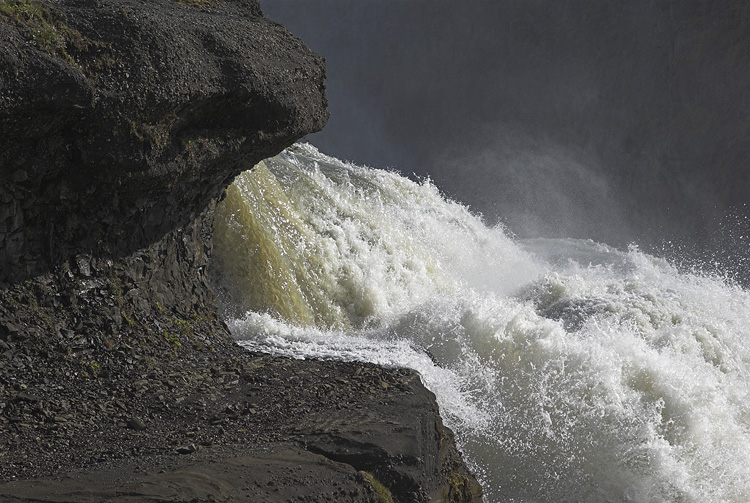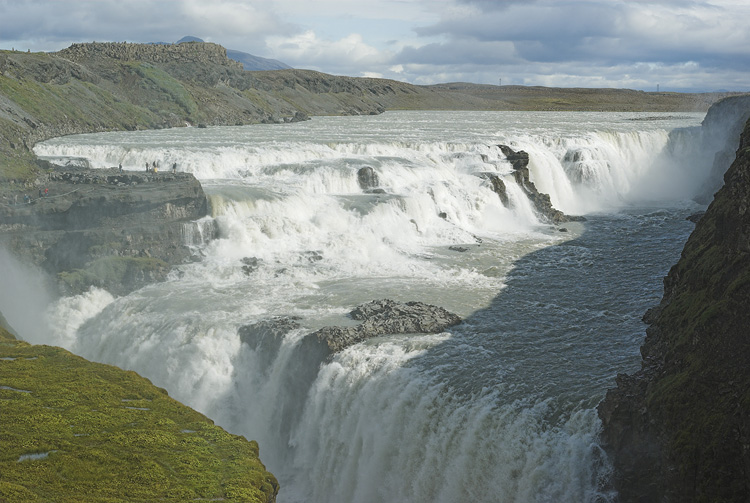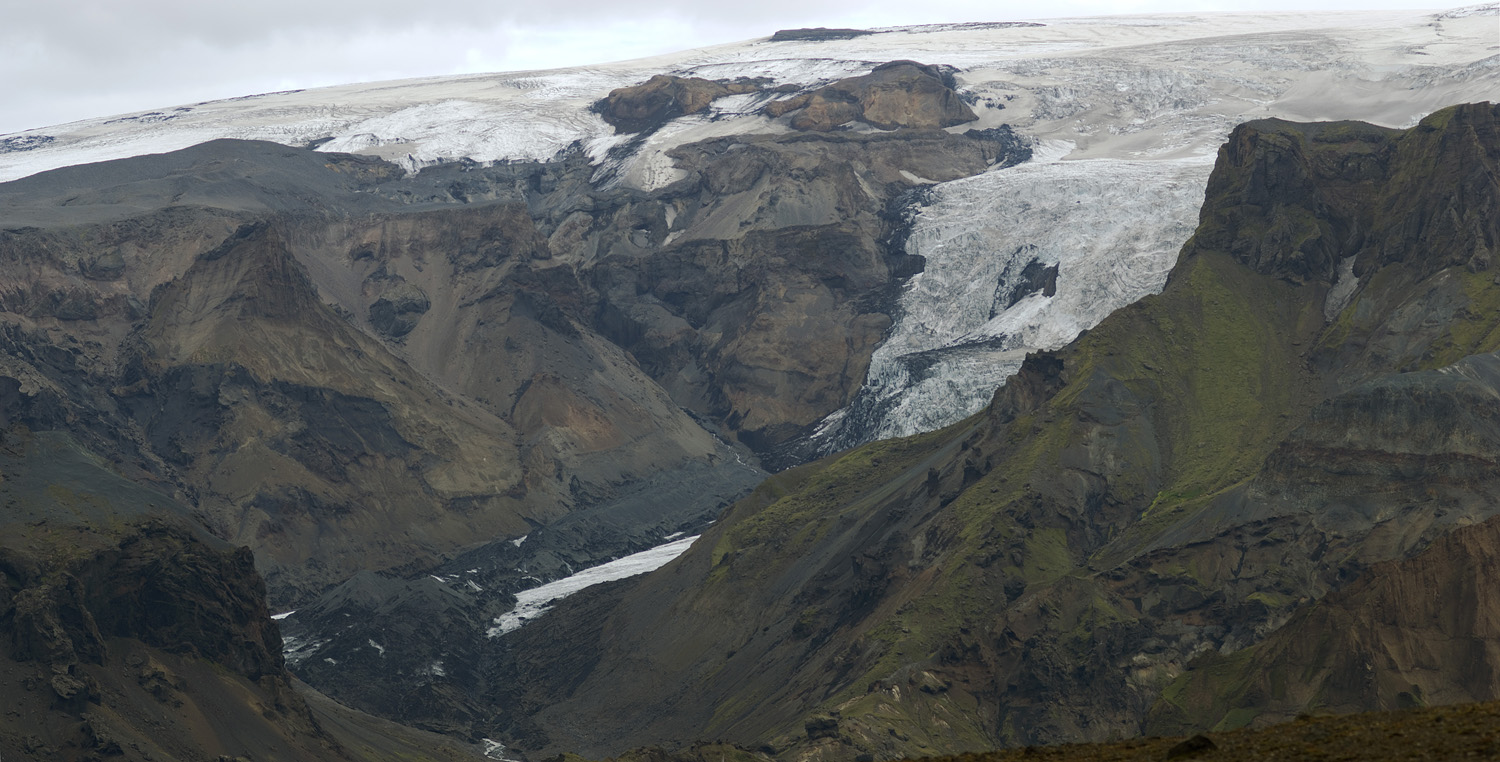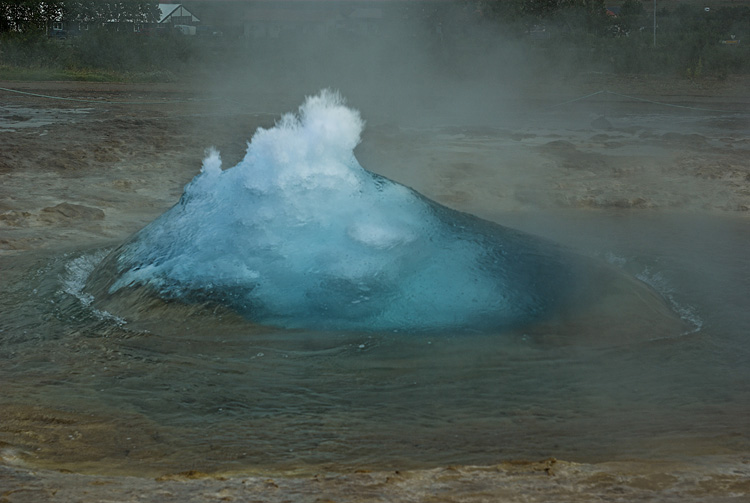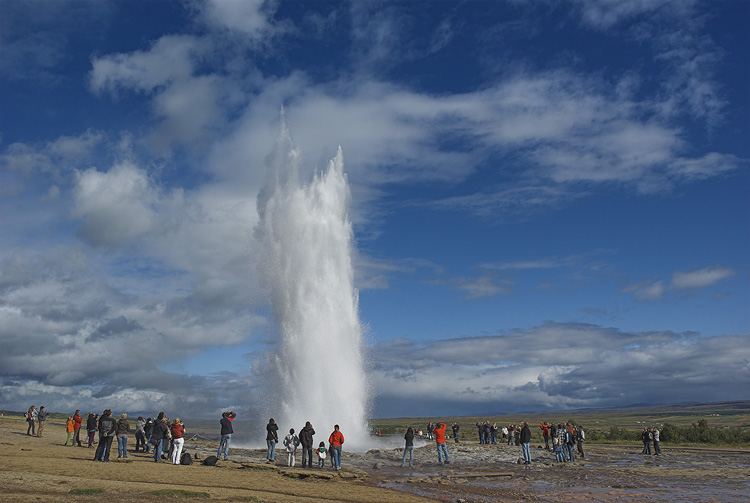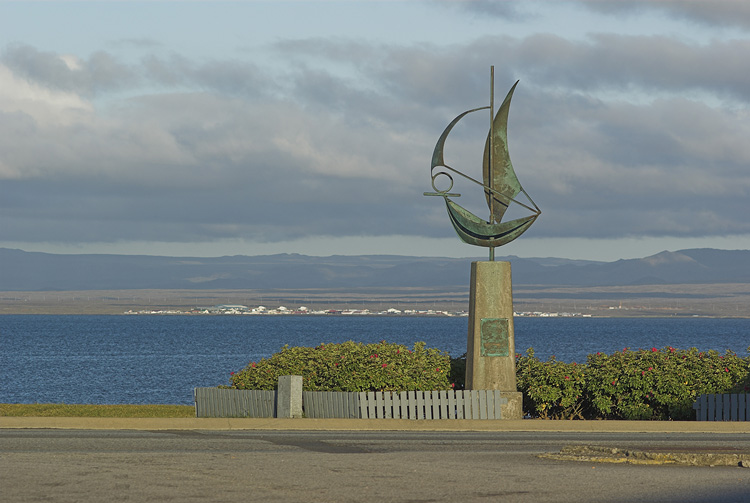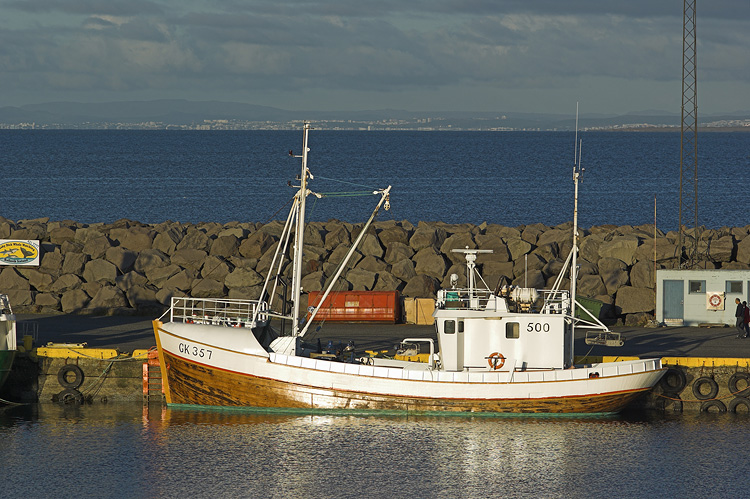Geysir"Geysir" is the name of the now inactive big geysir, and then it became the name of the phenomenon itself. The picture shows the geysir Strokkur, caught in the act, at the beginning of an eruption. A deep and thin hole filled with water, which, surrounded by hot rock, may provide conditions for a geysir. The water deep in the tube heats up to boiling temperature. As soon as it starts to boil the bubble formation leads to a decreasing pressure that propagates even more boiling, which finally ejects a certain quantity of warm water and steam up into the air. This process repeats in more or less constant cycles. |
StrokkurIt is the only active geysir remaining on Iceland, after the bigger Geysir nearby had finally ceased working in 2000. The latter had never shown the same reliability as Strokkur does now, which erupts every few minutes a water column up to 30 m into the air. The application of soap into Geysir to induce an eruption was cancelled fifteen years ago, but Strokkur had also been given some human help by drilling a yet deeper hole into the geysir's vent. An eruption develops within a second, the water column already collapsing shortly after. It doesn't pose a threat to the many tourists as the water is only lukewarm.
|
